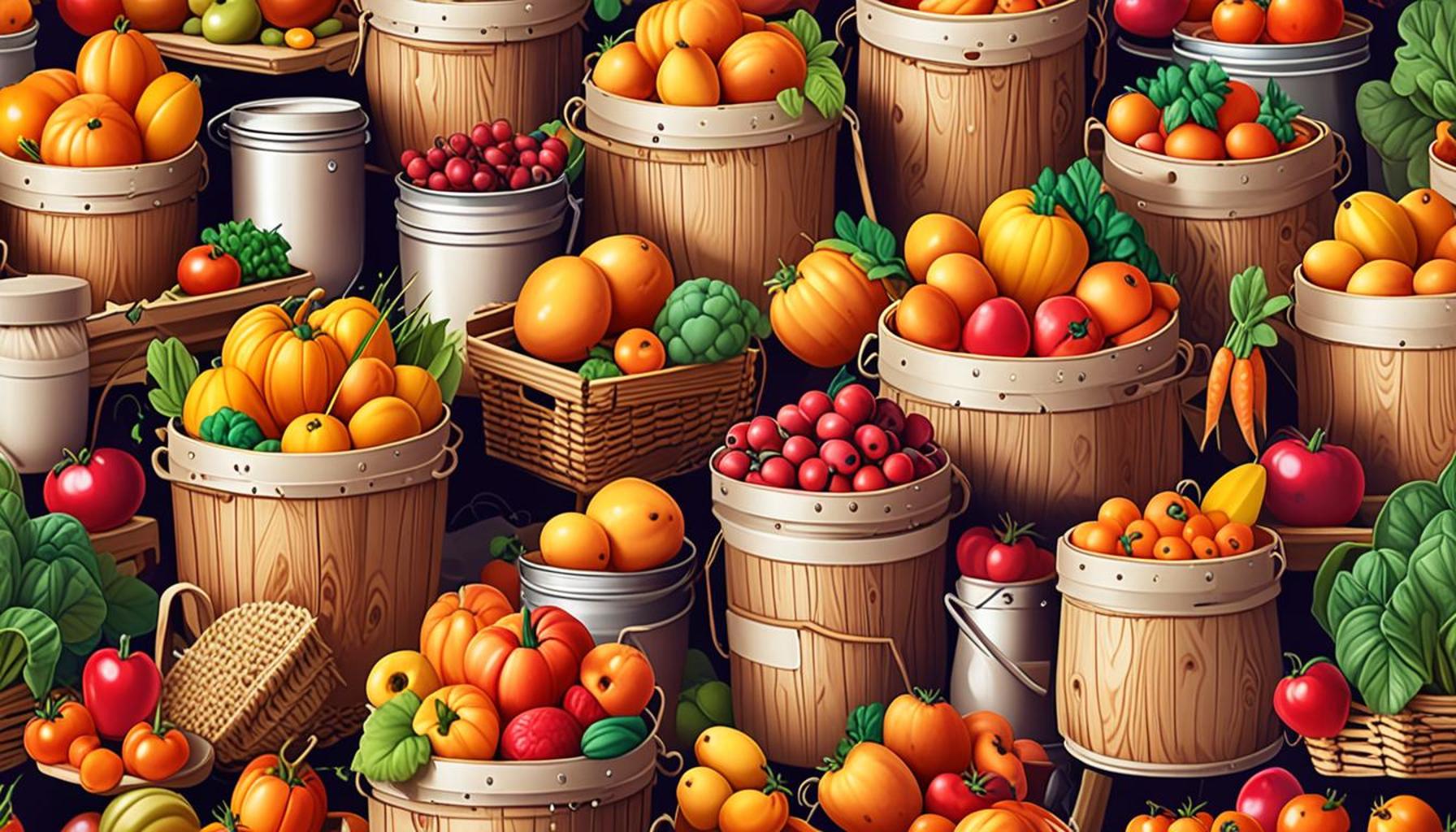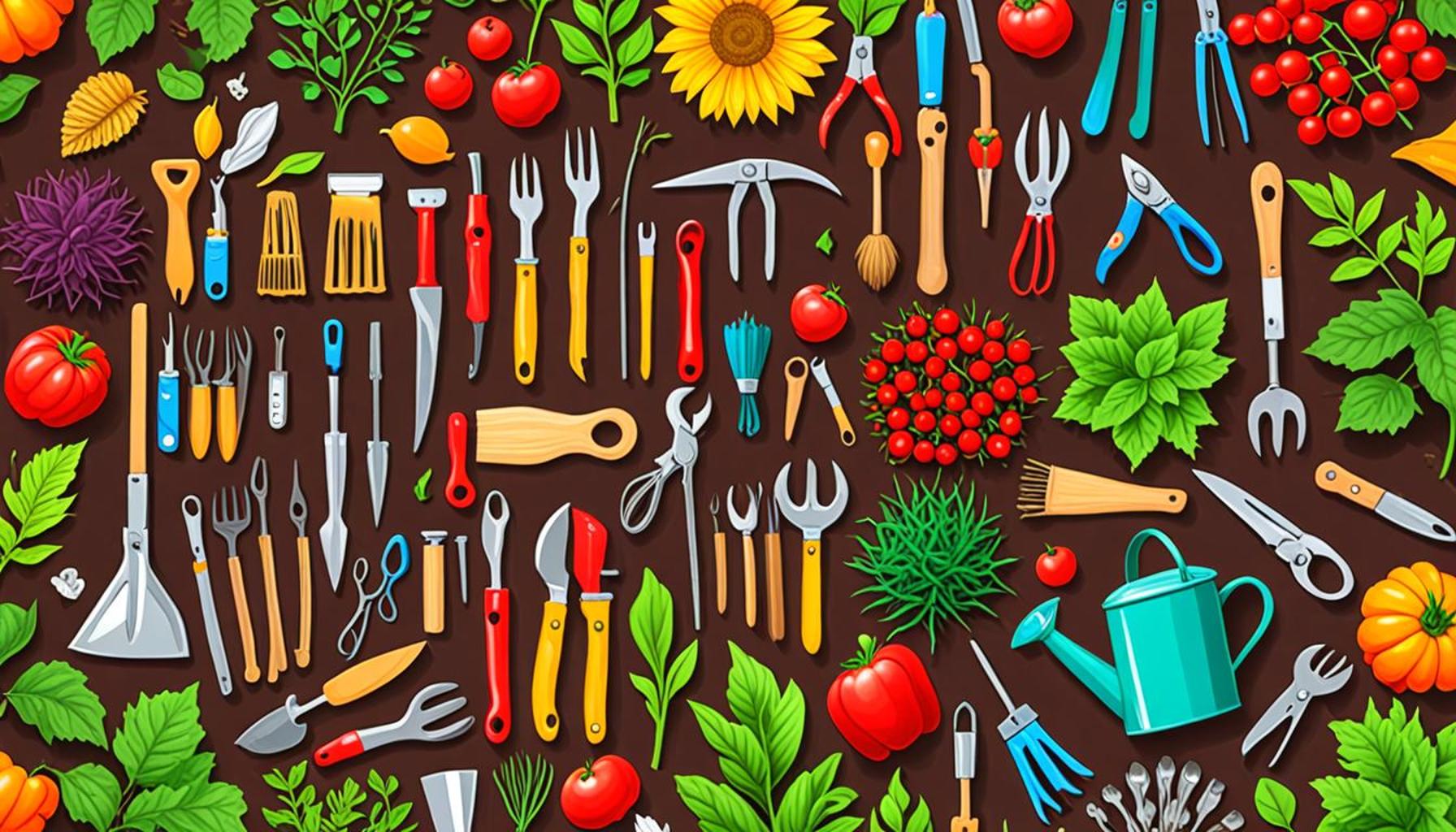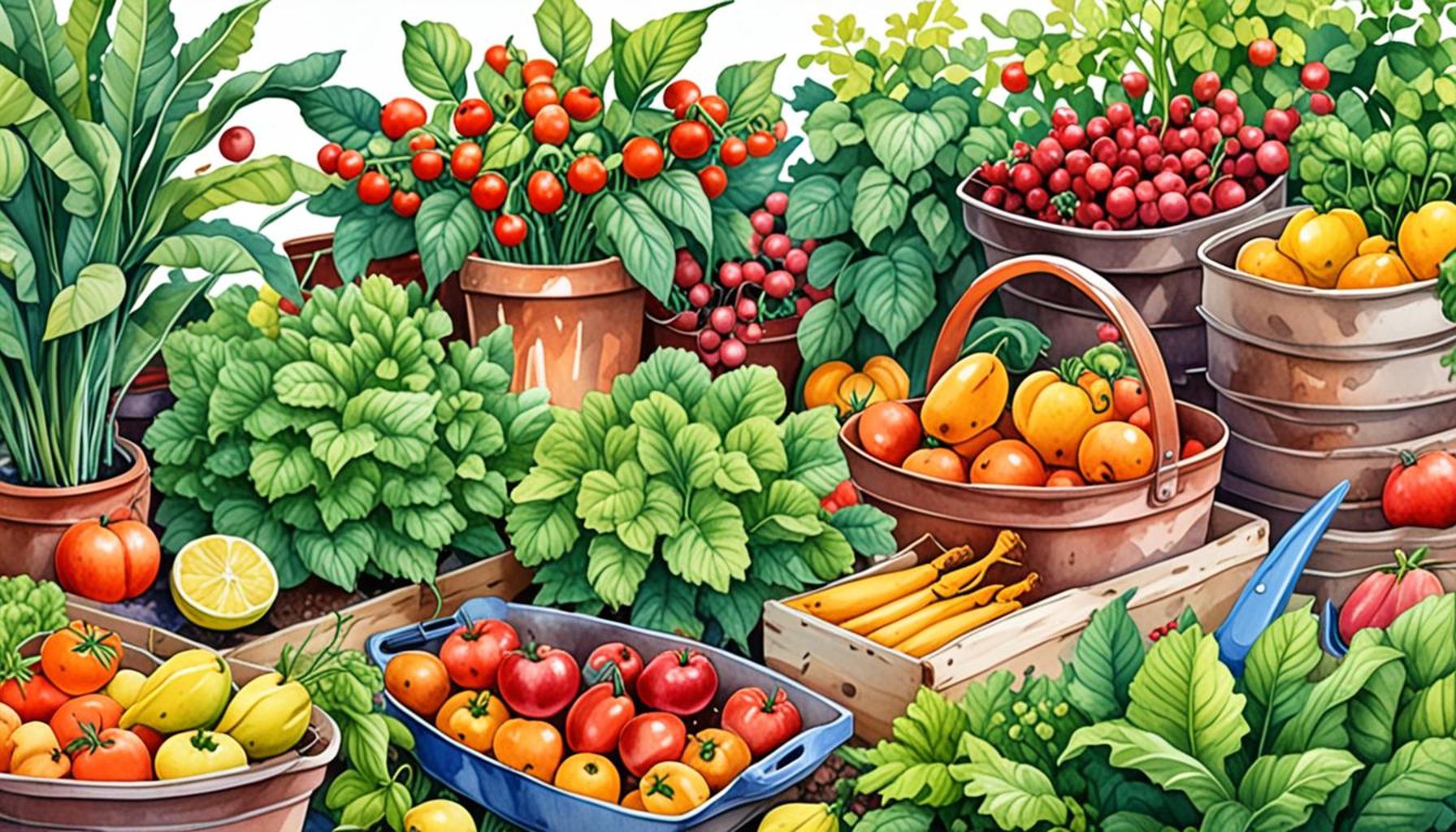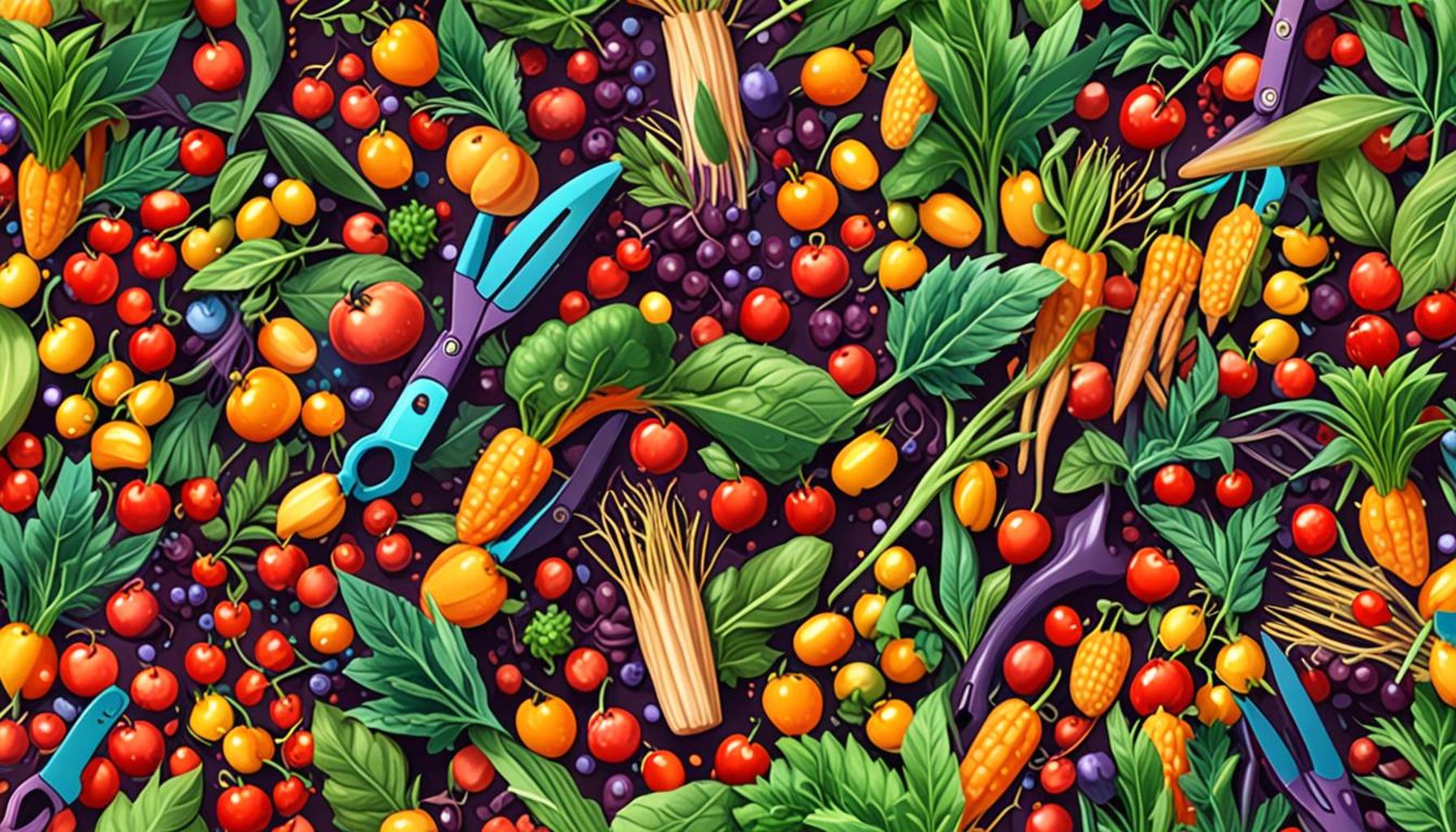Storage and Preservation Techniques for Harvested Products: Maximize Your Harvest

The Importance of Proper Storage Techniques
Efficiently managing your harvest’s bounty requires more than just gathering fruits, vegetables, or grains; it demands understanding storage and preservation techniques. Improper methods can lead to spoilage, loss of flavor, or decreased nutritional value. Understanding how to properly store food not only maximizes your harvest but also enhances the quality and lifespan of your stored produce.
One of the most compelling reasons to master these techniques is their ability to significantly extend the shelf life of your food. Fruits like apples and citrus can be stored in a cool, dark place to last several months, while root vegetables like carrots and potatoes can remain fresh in a root cellar for even longer. The USDA estimates that proper storage and preservation can extend shelf life by up to 50%, reducing the risk of waste.
Quality Maintenance: Preservation techniques like refrigeration, canning, and fermentation not only help maintain the appearance but significantly preserve flavor and nutrients. For instance, blanching vegetables before freezing them helps lock in vitamins and keep colors vibrant. Canning, a popular method particularly for home gardeners, involves sealing food in jars; this can intensify flavor and offer a convenient way to enjoy seasonal produce all year long. Foods canned at their peak freshness can taste even better than some commercially processed alternatives, making them a smart choice for preserving quality.
Minimized Waste: Effective preservation is crucial in reducing spoilage, which translates to saving money and resources. The average American household discards about 30-40% of its food each year according to the USDA, a staggering statistic that highlights the importance of understanding storage methods. By implementing proper techniques, from storing herbs in water to extending the life of bread by freezing portions, individuals can make a substantial impact on their grocery bills and our environment.
In the United States, where agriculture is a key industry, understanding these techniques can make a substantial difference. For farmers, large and small, the ability to maximize their harvest is essential not only for profit but also for sustainability. Here is a closer look at common storage options:
- Canning: This time-honored method involves sealing food in glass jars and heating them to kill bacteria and enzymes, making the food shelf-stable for years.
- Freezing: An effective way to preserve the freshness of fruits and vegetables for extended periods, freezing retains flavor and nutritional value far better than other methods.
- Drying: This method reduces moisture content, which inhibits spoilage. Options range from using a dehydrator to air-drying herbs, and this technique is excellent for creating homemade snacks like dried fruits or jerky.
Exploring these techniques not only enhances how you manage your harvest but also leads to greater culinary creativity and reduced food waste. As you dive deeper into the world of storage and preservation, the potential to unlock lasting value in your food will surely open new avenues for nourishment and enjoyment.
DIVE DEEPER: Click here to learn about soil layering strategies
Exploring Effective Storage Methods
When it comes to maximizing your harvest, understanding the various storage and preservation techniques is critical. Not only do these methods help keep your food fresh for longer, but they also enhance the overall taste and nutritional value of your produce. Whether you are a small-scale gardener or managing a larger farming operation, familiarizing yourself with these techniques can significantly cut down waste and increase your yield’s profitability.
To get started on your preservation journey, let’s delve into some of the most prevalent techniques available, each with its own unique advantages and applications.
Canning: A Time-Honored Tradition
Canning has stood the test of time as a reliable method for preserving food. This process involves sealing food in airtight glass jars and heating them to high temperatures to destroy microorganisms and enzymes that cause spoilage. Canning not only locks in flavors and nutrients but also allows you to enjoy your harvest well into the off-season. For those living in the United States, processing tomatoes and fruits into delicious jams and salsas is a common practice that showcases the beauty of preserving what you grow.
Freezing: Locking in Freshness
Freezing is another excellent technique that can drastically extend the life of your harvested produce. The freezing process retains most of the vitamins and minerals, making it a superior option compared to other preservation methods. For instance, blanching vegetables before freezing helps maintain their vibrant colors and flavors. You can freeze everything from berries to green beans, thereby maintaining the essence of your harvest year-round. Remember that proper packaging is key; airtight bags or containers prevent freezer burn, ensuring that your fruits and vegetables remain tasty and safe to eat.
Drying: An Ancient Technique with Modern Benefits
Drying is a preservation method that dates back centuries and is still relevant today. By removing moisture from foods, drying inhibits the growth of spoilage-causing organisms. This technique is versatile, allowing for the preservation of herbs, fruits, and meats alike. Home dehydrators have become popular for creating everything from velvety fruit leathers to savory jerky. Not only does this method minimize the volume of your produce, making it easier to store, but it also adds a concentrated flavor profile that can enhance your cooking.
A practical approach to preservation can also be reflected in how one stores herbs. For example, storing fresh herbs in water, similar to how one would arrange flowers, can extend their freshness. What’s more, even simple techniques like keeping bread in a bread box or freezer can prevent it from going stale. The simplicity of these techniques lends itself to a broader understanding of how even minor adjustments can maximize your overall harvest quality.
As you explore these storage methods further, remember that the ultimate goal is not just to preserve food but to embrace the seasonal rhythms of harvest. By implementing effective preservation techniques, you not only optimize your food storage but also open up a world of culinary possibilities that can last long after the growing season has ended.
| Technique | Advantages |
|---|---|
| Cold Storage | Prolongs freshness and maintains nutritional value by slowing down spoilage processes. |
| Dehydration | Reduces weight and volume, making transportation easier while retaining flavor and essential vitamins. |
| Canning | Extends shelf life and provides a stable product that is nutritionally dense for long-term storage. |
| Fermentation | Enhances flavors while promoting probiotic benefits and preservation through acidic environments. |
The effectiveness of these techniques lies in their ability to create environments that inhibit microbial growth and decay. For instance, cold storage employs refrigeration to maintain cool temperatures, crucial for preventing enzymatic and microbial activity. On the other hand, dehydration not only eliminates moisture but also concentrates nutrients, making harvested products lighter and easier to store.Canning can be particularly appealing for those wishing to stock their pantries, as it creates a vacuum seal that prevents spoilage. Meanwhile, fermentation appeals to the culinary enthusiast, offering unique flavors while harnessing the power of beneficial bacteria.Investing time and resources into mastering these techniques not only plays a vital role in food security but also empowers producers to commercialize their harvest effectively. By understanding and applying these preservation strategies, one can truly maximize the benefits of their hard-earned yield. As each method offers distinct advantages, the potential for enhancing storage practices is boundless.
DISCOVER MORE: Click here for helpful tips on selecting balcony plants
Modern Techniques and Innovations in Food Preservation
As technology continues to evolve, so do the storage and preservation techniques available for maximizing your harvest. Innovations in food preservation not only offer convenience but also ensure that the integrity of the products remains intact while possibly improving longevity and nutrition. Here, we explore some of the most modern techniques that can elevate your post-harvest process.
Vacuum Sealing: The Science of Preservation
Vacuum sealing is a highly effective method for preserving food by removing the air from bags or containers to limit oxidation and spoilage. This technique is increasingly popular among home cooks and professional chefs alike, as it can significantly extend the shelf life of perishable goods, including meats, cheeses, and even vegetables. By preventing exposure to air, vacuum sealing keeps flavors vibrant while inhibiting bacterial growth.
For those interested in bulk buying or meal prepping, vacuum-sealed food can last up to five times longer than conventionally packed foods. Additionally, the compact nature of vacuum-sealed bags means they take up less space in your pantry or freezer. Consider investing in a sealant machine for an efficient and cost-effective storage solution that maximizes the use of your harvest.
Fermentation: A Flavor-Enhancing Technique
Fermentation is another intriguing method of food preservation that has gained immense popularity. This age-old technique not only extends shelf life but also fosters a range of beneficial probiotics that can boost gut health. Foods like sauerkraut, kimchi, and pickles utilize the fermentation process to develop complex flavors while preserving nutritional value.
To ferment, simply submerge vegetables in a brine solution and allow them to ferment at room temperature for a set period. Home fermentation kits are increasingly accessible, making it easier for anyone to explore this method. Additionally, this technique uses minimal equipment, allowing you to create a unique array of flavors while maximizing the use of seasonal produce.
Controlled Atmosphere Storage: The Future of Preservation
For larger operations or those with specific storage needs, controlled atmosphere storage presents an advanced solution. This method involves regulating the atmospheric conditions—such as oxygen, carbon dioxide, and humidity—within storage facilities to minimize respiration rates and slow down the aging process of fruits and vegetables. By maintaining the ideal environment, produce can be stored for months without compromising quality.
This technology is especially useful for apple and pear growers, as it allows for off-season marketing without sacrificing flavor or texture. If you’re managing a larger yield, investigating controlled atmosphere storage may offer a way to extend the marketable shelf life of your products while keeping them fresh and delicious.
Smart Storage Solutions: Embracing Connectivity
With the integration of technology into everyday living, smart storage solutions have begun to enhance food preservation methods. Smart refrigerators equipped with sensors can monitor produce freshness and provide alerts when food items are nearing expiration. Some can even suggest recipes based on what ingredients you have on hand, thus encouraging usage before spoilage occurs.
These advancements not only promote efficient use of harvested products but also push the boundaries of food sustainability. With capabilities like temperature control and monitoring moisture levels, smart storage systems can help you manage your inventory more effectively and reduce food waste.
By exploring these innovative storage methods, you can revolutionize the way you preserve your harvested products, leading to a more sustainable and enhanced culinary experience all year round.
DISCOVER MORE: Click here for essential tips on raised bed garden preparation
Conclusion: Embracing Efficient Storage and Preservation Techniques
In today’s fast-paced world, understanding and implementing storage and preservation techniques for harvested products is essential for maximizing your harvest and minimizing waste. Innovations such as vacuum sealing, fermentation, and controlled atmosphere storage not only extend the longevity of food items but also enhance their flavor and nutritional profile. Moreover, the advent of smart storage solutions encourages greater efficiency and helps consumers make the most of their produce.
These methods offer a range of solutions suitable for both home cooks and larger agricultural operations alike, ensuring that you can enjoy the fruits of your labor well beyond the immediate harvest season. As we collectively strive for sustainability, embracing these modern techniques can significantly reduce food waste and contribute to a more eco-conscious lifestyle.
Each technique presents unique advantages; therefore, it is worthwhile to explore and implement a combination of methods that align with your specific needs and preferences. With the right resources and knowledge at your disposal, you can elevate your culinary creations while supporting local agriculture and the environment.
As consumers become increasingly aware of their food choices, staying informed about effective preservation techniques is essential for maximizing both quality and value. Dive into the world of food preservation techniques today, and unlock the full potential of your harvest!


